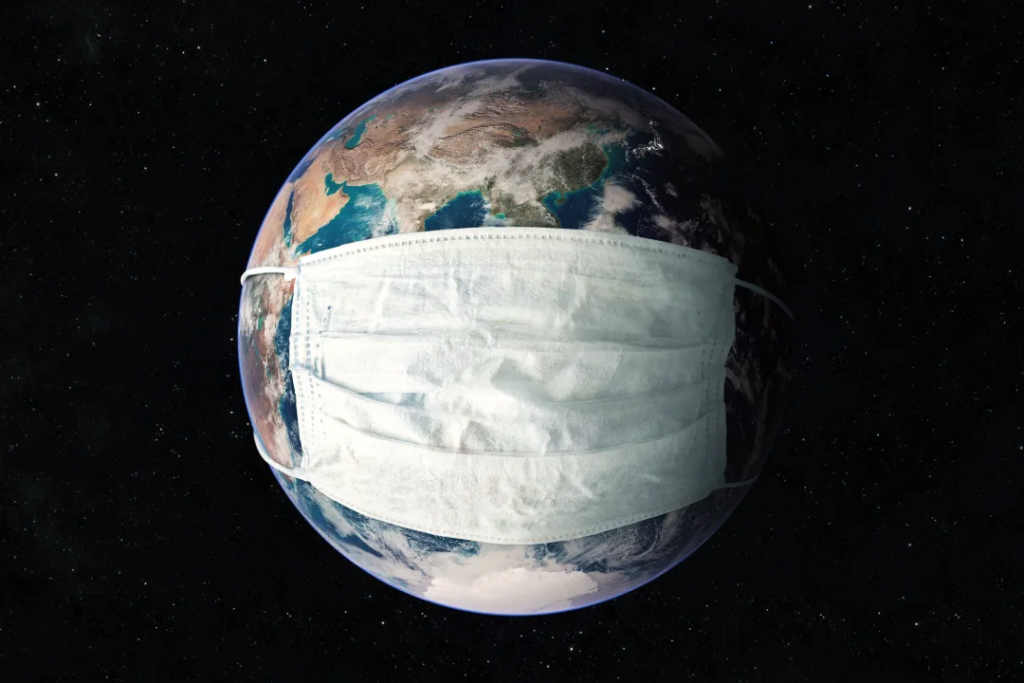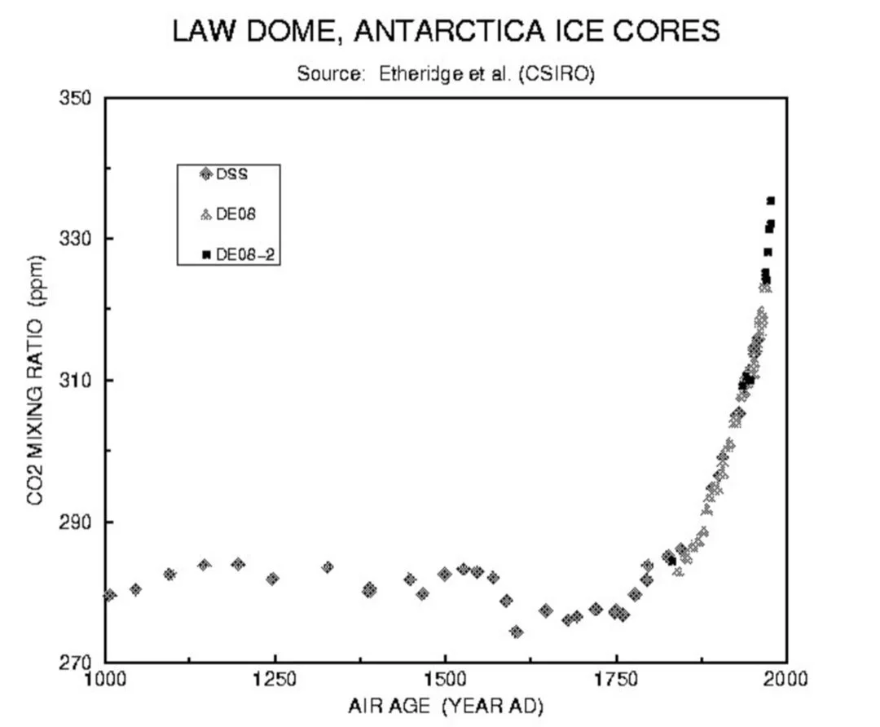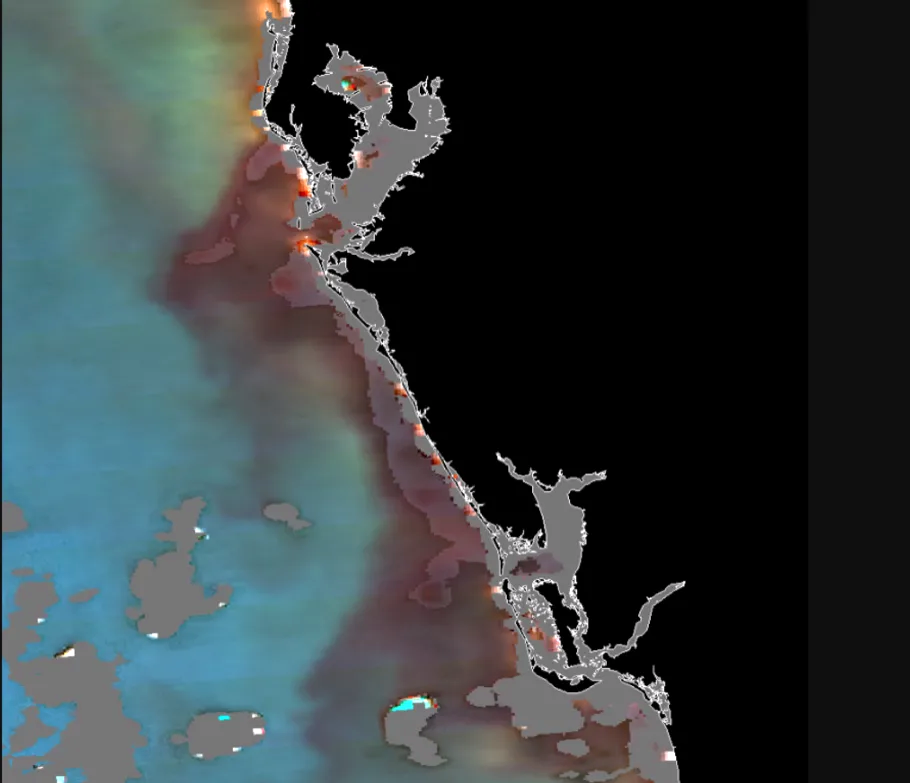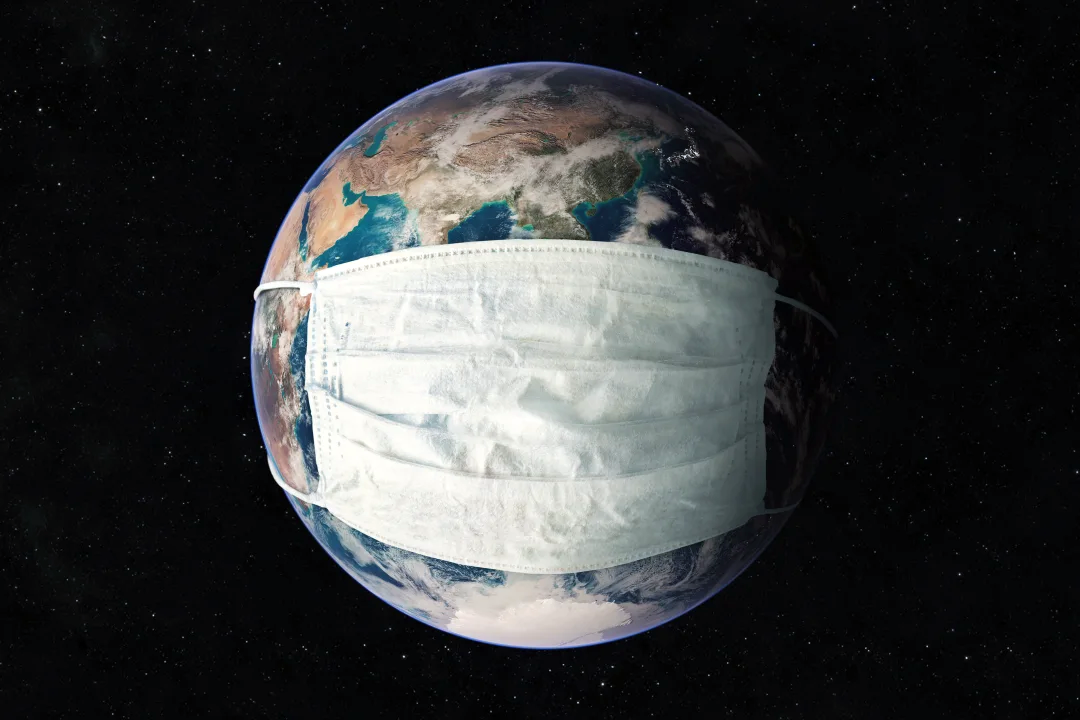Red tide outbreaks and the spread of COVID-19 may both be connected to a warming planet

Our warming planet is already affecting human health in Southwest Florida Image: SHUTTERSTOCK/DIY13
(This article was originally published July 16, 2020 in Sarasota Magazine)
The earth is almost 2 degrees Fahrenheit warmer since the beginning of the Industrial Revolution a little more than 250 years ago. Greenhouse gases, which trap heat, have never been higher, even in past climates where global temperatures have been higher. We know this from present day measurements and using accurate methods to look at ice cores dating back almost 1 million years.

The concentration of CO2 in the Antarctic ice cores dating back a thousand years. This shows how greenhouse gases have increased since the the Industrial Revolution. Image: Courtesy Photo
While 2 degrees Fahrenheit does not seem like much on a global scale, it is. Sea ice in the Arctic, for example, is at the lowest level in thousands of years. Melting ice from the sea isn’t a big contributor to sea level rise for Florida, but Greenland and Antarctic ice melts are also increasing and will likely create faster sea level rise here.
Our warming planet is already affecting human health in Southwest Florida. We know that red tide, which is enhanced by rising temperatures, produces toxins that are hard on fish and wildlife. But two years ago, we also learned that many people in Florida, even those living east of I-75 far from the coast, were suffering from lung issues associated with the red tide outbreak.

In this image from summer 2018, gray is the landmass of Florida, the Gulf of Mexico is green, and the clusters of red are red tide blooms. The redder the color, the worse the red tide. Image: Courtesy Photo
A warmer Gulf means that in winter, water temperatures are staying above 60 degrees Fahrenheit, which is a critical level for red tide algae growth. If the water is colder than 60 degrees, the algae die off before the next warm season. When there’s no die off, the algae have a head start the following season. More and more winters are seeing sea surface temperatures above this critical level.
The severity of red tide outbreaks is also enhanced by slower moving tropical systems due to weakening jet streams, which can make rainfall events much larger. This increases the amount of runoff from sewage spills and fertilizer from the mainland into the Gulf after big rain events, and blooms of red tide follow. I also believe Sahara dust, seen just a few weeks ago, can act as a booster for red tide under certain circumstances. Sahara dust is worse now because of desertification of an ever-expanding desert in Africa where winds whip dust that travels to the Gulf of Mexico.
Climate may also impact how COVID-19 is spreading in our environment. Our lovely Florida winters are warmer than 50 years ago, with moderately high humidity, which means we have our windows open and we spend time outside in nature’s outdoor air conditioning. In summer weather, conditions are increasingly hot and humid, driving many people inside where the air is dry and recycled, limiting fresh airflow. A research study in China, not yet peer reviewed, indicates only two of 1,245 COVID-19 cases were traced to outdoor transmission, and the remainder came from indoor transmission. China’s surveillance system allows for contract tracing not available in free societies.
Why does this matter? Florida did very well with COVID-19 infections last winter and spring, with a fraction of the infection rate suffered in the northern states. Now the COVID tide has reversed as our northern populations are outside enjoying moderate summer conditions. Climate and weather conditions are just one factor impacting COVID transmission rates, but it is interesting to note how southern states have had the worst infections this summer as people stay inside.
Climate and human health go hand in hand, another reason why we need to mitigate and adapt to our climate issues in Florida. Waiting will cost more, and positive outcomes will be limited if we wait. This is why I have created the Climate Adaptation Center (CAC) in Sarasota. Our website will be launched this fall.
The CAC is an expert resource to inform government, academe and the private sector so they can create the necessary adaptation strategies and actions to protect our Florida way of life and foster the climate economy. While larger global solutions will solve the climate problem eventually, we all have to live and adjust to a climate-warmed world. CAC is raising $2 million in private donations to kick off its mission.
If you want to know more about the CAC, send me a note at bob.bunting@theclimateadaptationcenter.org and I will keep you posted.
– Bob Bunting, CEO, Climate Adaptation Center

